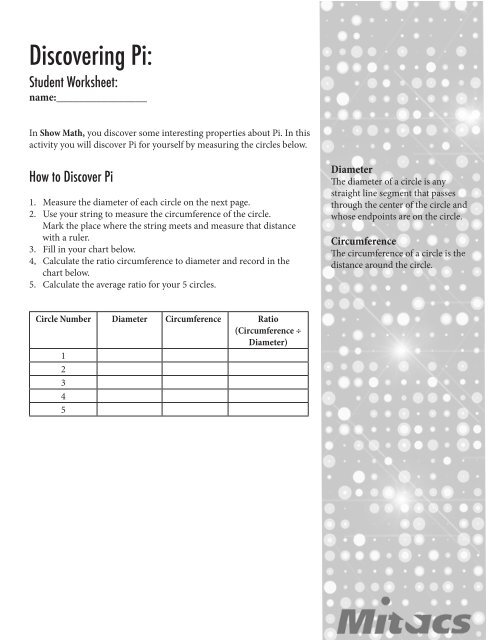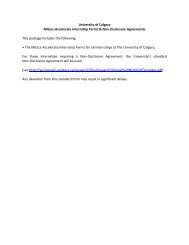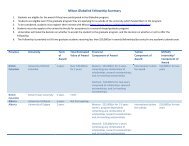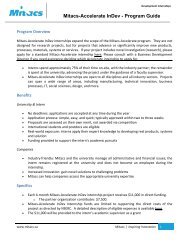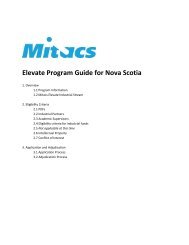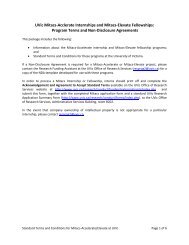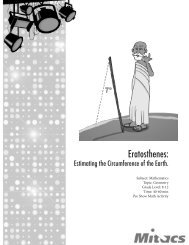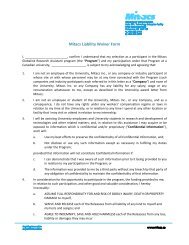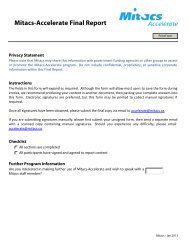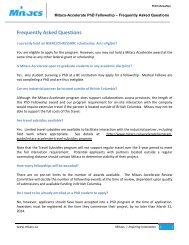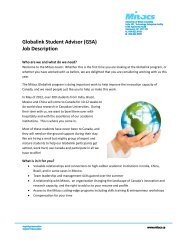Discovering Pi: - Mitacs
Discovering Pi: - Mitacs
Discovering Pi: - Mitacs
Create successful ePaper yourself
Turn your PDF publications into a flip-book with our unique Google optimized e-Paper software.
<strong>Discovering</strong> <strong>Pi</strong>:Student Worksheet:name:________________In Show Math, you discover some interesting properties about <strong>Pi</strong>. In thisactivity you will discover <strong>Pi</strong> for yourself by measuring the circles below.How to Discover <strong>Pi</strong>1. Measure the diameter of each circle on the next page.2. Use your string to measure the circumference of the circle.Mark the place where the string meets and measure that distancewith a ruler.3. Fill in your chart below.4, Calculate the ratio circumference to diameter and record in thechart below.5. Calculate the average ratio for your 5 circles.DiameterThe diameter of a circle is anystraight line segment that passesthrough the center of the circle andwhose endpoints are on the circle.CircumferenceThe circumference of a circle is thedistance around the circle.Circle Number Diameter Circumference Ratio(Circumference ÷Diameter)12345
1. What is the average ratio of circumference to diameter?
2. What was the class average ratio of circumference to diameter?3. <strong>Pi</strong> is often approximated to be 3.14. How close was your group’s average to this approximation? How closewas that class average?4. Were any of your measurements far from <strong>Pi</strong>? Why is that?5. Why is it important to measure circles of different sizes?6. Should taking the class average provide you with a better approximation of <strong>Pi</strong>? Why or why not?7. Can you derive the formula for circumference of a circle by knowing that <strong>Pi</strong> is the ratio of diameter tocircumference?


